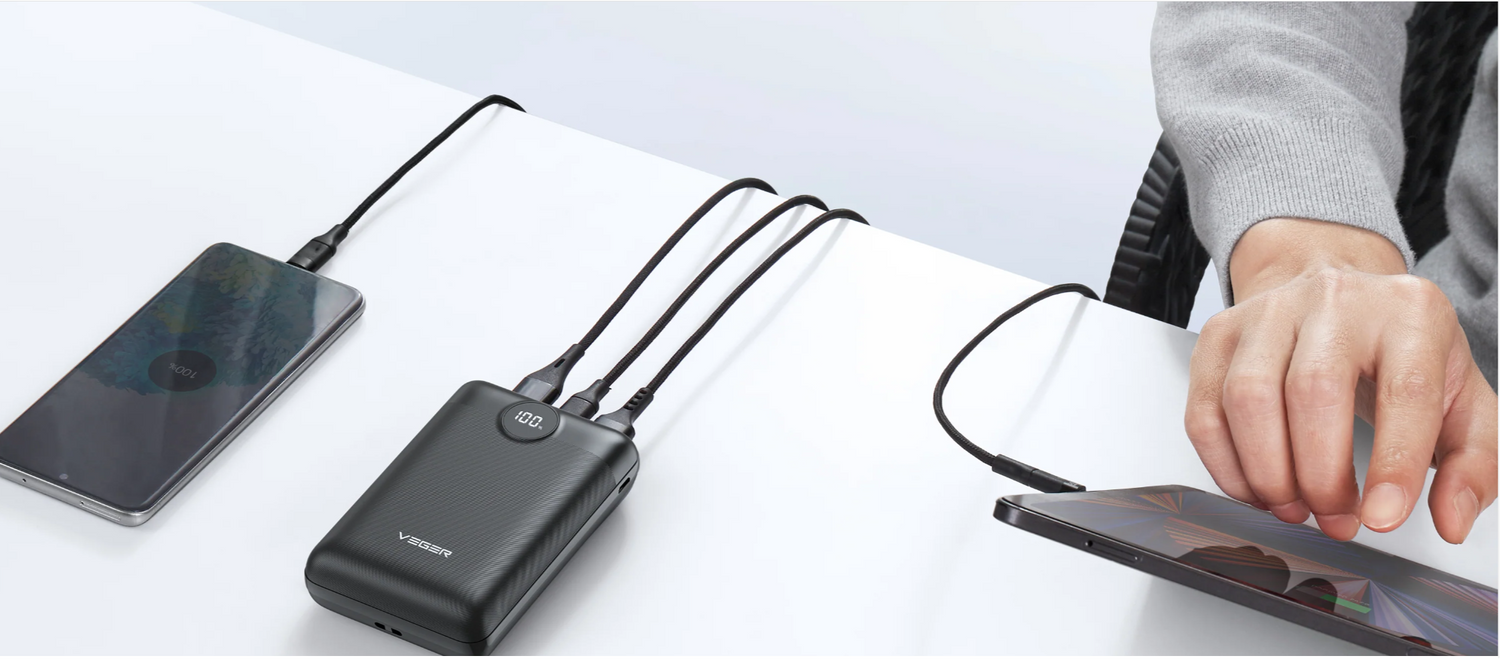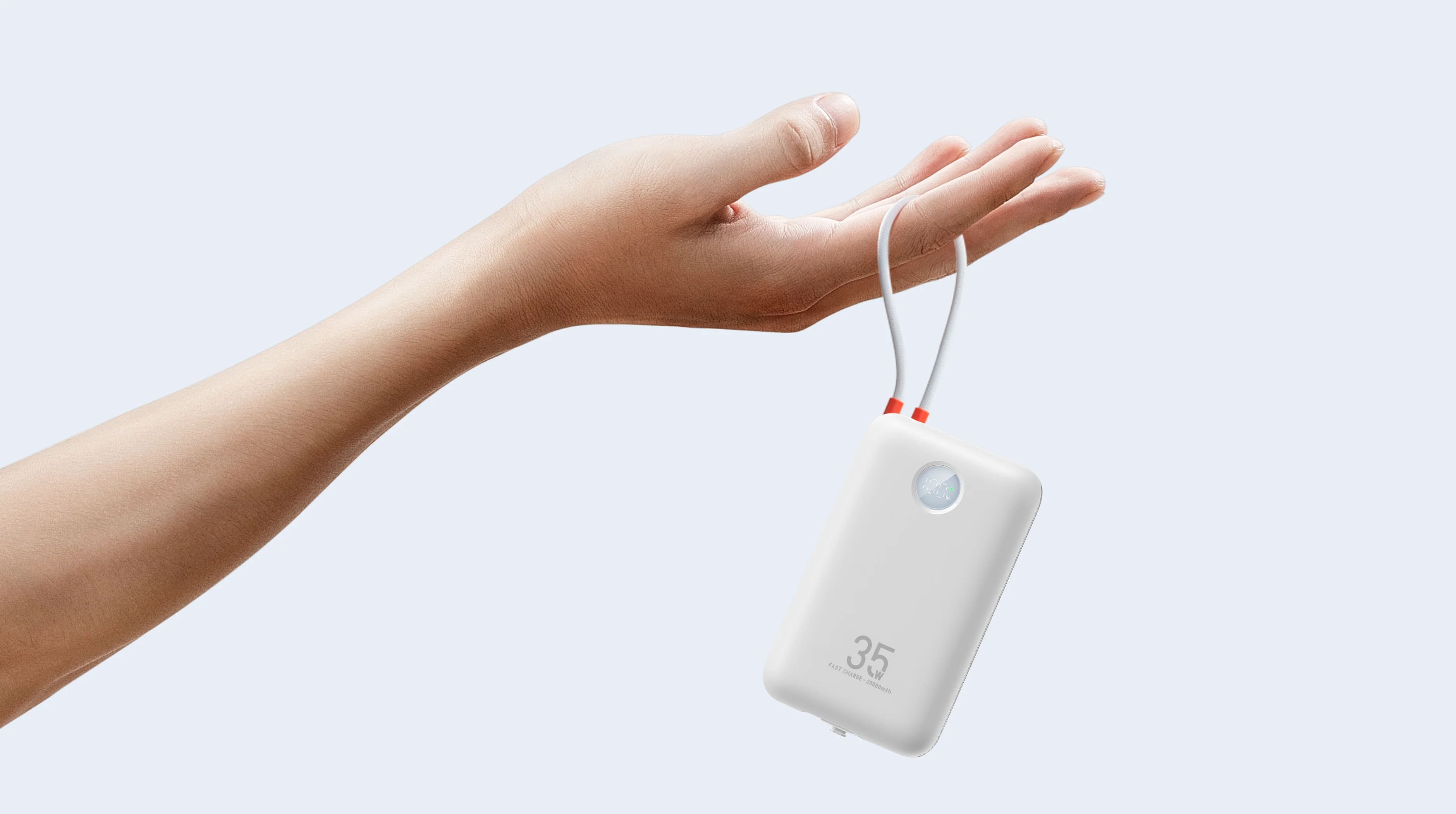Imagine needing your power bank in an emergency—only to find it dead. No lights. No charging. Nothing. It’s a frustrating situation we’ve all encountered. If your power bank is not charging, you’re not alone—and you’re not helpless.
This guide will walk you through common issues, how to fix them, and tips to avoid future problems. Whether it’s your first power bank or you’ve used several, understanding the basics can save time and keep your devices powered up.
Why My Power Bank Not Charging?
When it comes to a power bank not charging, there are typically two scenarios:
Power bank not charging iPhone or other devices
- This could be due to a bad cable, incompatible output port, or internal fault in the power bank.
- The output voltage or current may be too low to power your iPhone.
- Dirt or damage to the USB output port can interfere with the connection.
Power bank not charging itself
- The cable or charger may be faulty, supplying insufficient power.
- The input port may be dirty or damaged.
- The internal battery may be degraded and unable to receive a charge.
- Overheating or firmware errors may prevent charging.
These scenarios are frustrating—but fortunately, most of them are fixable.
How to Tell If a Power Bank Is Bad
Before jumping to conclusions, observe the signs of a bad power bank:
- No LED indicators when plugged in
- Doesn’t hold charge even after long charging times
- Gets unusually hot
- Charges your phone only briefly before dying
- Slow or no output to devices
These signs often mean your power bank charger not working or the battery is nearing the end of its lifespan.
To test whether your power bank is faulty, try using a different cable and wall charger to rule out any issues with your accessories. Additionally, attempt charging another device with the power bank to see if it works properly. It's also helpful to charge the power bank in a cool, dry environment, as excessive heat or moisture can affect its performance.
If it still doesn’t work, it may be time to fix—or replace.
How to Fix Power Bank Not Charging iPhone
Here are some reliable ways to troubleshoot a power bank not charging your iPhone:
- Use a certified Lightning cable and compatible power bank. Make sure you're using an MFi-certified cable and a power bank that supports iPhone charging—ideally one with 5V/2.1A or higher output. Non-certified cables can lead to intermittent failures and system errors.
- Inspect and clean the USB output port. Dust and lint can build up in the power bank's output port. Use compressed air or a small brush to clean it. A blocked port may prevent your phone from charging.
- Clean the iPhone's Lightning port. A dirty or oxidized port on your iPhone can cause false connections. Clean it gently using a wooden toothpick or soft cloth.
- Restart and update your iPhone. Sometimes iOS bugs interfere with charging accessories. Restart your phone and make sure the system is updated.
- Test with another power bank. If your iPhone charges fine with a different power bank, the issue is likely with the original device.
If you’re curious about how quickly your iPhone should charge using a power bank, check out our article on how long do iPhones take to charge for more insights on charging times and optimization.
How to Fix Power Bank Not Charging Itself
If your power bank is not charging or power bank not charging fully, try the following steps:
- Try a different charger and cable. Use a high-quality adapter (at least 5V/2A) and a fresh cable. Avoid USB ports on computers, which provide lower current.
- Check the input port. Examine the input port for damage, dirt, or bent pins. Clean it carefully and make sure the cable fits snugly.
- Let the power bank cool down. Overheating can cause the battery to enter a protective shutoff mode. Wait 30–60 minutes before trying again.
- Reset the power bank. Some models allow you to reset by holding the power button for 10+ seconds. Check the manual for your specific device.
- Try long-duration charging. Deeply discharged batteries may not respond immediately. Leave it plugged into a working charger for several hours.
- Switch outlets. Try charging from a different wall outlet, or use another USB power brick to eliminate wall adapter faults.
- Contact the manufacturer. If nothing works, internal battery failure may be the cause. Contact the brand or replace it.
You might also want to check our detailed guide on how to charge a power bank to ensure you’re using the best practices for charging your device safely and efficiently.
How to Avoid Power Bank Not Charging
Prevention is easier than repair. Here’s how to keep your charger working well:
- Use high-quality cables and adapters.
- Avoid draining the battery to 0%—charge when it hits 20%.
- Don’t overcharge; unplug when full.
- Store between 40–80% in cool, dry places.
- Clean the ports regularly.
Veger’s smart power banks are designed to protect against overheating, overvoltage, and short circuits. Built with fast-charging technology and high-quality components, they minimize the risk of power bank charger not charging issues.
Whether you're looking for everyday convenience or travel-ready durability, Veger power banks provide reliable charging with style and safety built in.
When Should You Replace the Power Bank?
There comes a point when fixing your power bank isn’t worth the trouble, and replacement is the best option. You should consider replacing your power bank if it won’t hold a charge at all or takes an excessively long time to charge. If you’ve already tried multiple fixes without success, that’s a clear sign it’s time for a new one. Physical issues like swelling, visible damage, or if the device keeps overheating, also indicate it’s no longer safe or reliable to use.
FAQs about Power Bank Not Charging
Do power banks lose charge when not in use?
Yes. All batteries slowly self-discharge. A high-quality model may retain 80–90% of its charge after a few months. To maintain health, charge it every 2–3 months.
What is the average lifespan of a power bank?
Most last 300–500 full charge cycles, or 2–3 years of regular use. Quality brands may last longer. If your power bank not charging fully or seems weaker, it may be reaching its end.
Can a dead power bank be revived?
Sometimes. Try resetting it or charging with a high-output charger for a few hours. But if completely unresponsive, it may be permanently damaged.
Is it normal for a power bank to get hot when charging?
Mild warmth is normal. Excessive heat, however, is not. If it becomes too hot to touch, stop charging immediately and inspect the environment, adapter, and cable.
Final Thoughts
A power bank not charging doesn’t always mean it’s dead. Sometimes the solution is as simple as a new cable—or as advanced as battery replacement. By knowing how to maintain and troubleshoot your power bank, you can extend its lifespan and avoid annoying surprises.
Looking for a long-lasting, fast-charging power bank that won’t let you down?
Explore Veger’s power bank collection—engineered for safety, speed, and style. Whether your portable charger not charging or you're upgrading to better quality, Veger has a smart, powerful solution for you.



![How to Charge a Power Bank in 2025 [Fast and Safe]](http://www.vegerpower.com/cdn/shop/articles/how-to-charge-power-bank.jpg?v=1750921525&width=3645)
